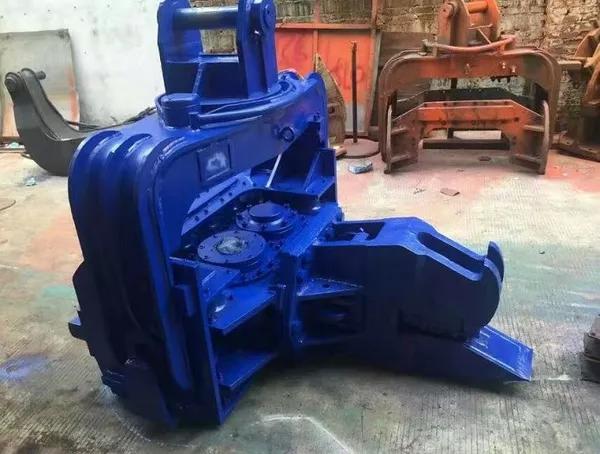The operation of the hydraulic vibratory hammer is to rely on the excavator hydraulic pump to provide hydraulic power to drive the hydraulic motor to run at high speed and drive the eccentric gear set to rotate at high speed, thereby generating high-frequency vibration force. The inner box and the outer box are covered with shock-absorbing rubber , to reduce the upward transmission of the vibration force, causing damage to the hanger and the large and small arms of the excavator, and at the same time generate a downward vibration force.
The inner box assembly and the chuck assembly are directly connected, so that the vibration force generated by the inner box assembly can be directly transmitted to the workpiece. The high-frequency vibration force generated by the box can make the soil around the workpiece vibrate at high frequency, thereby performing pile driving and pile pulling operations. The hydraulic vibratory hammer uses its high-frequency vibration to vibrate the pile body with high acceleration, and transmits the vertical vibration generated by the machine to the pile body, resulting in changes in the soil structure around the pile and a decrease in strength.
The soil around the pile body is liquefied to reduce the frictional resistance between the pile side and the soil body, and then the pile is sunk into the soil with the downward pressure of the excavator, the hydraulic vibratory hammer and the self-weight of the pile body. When pulling out piles, under the condition of vibration on one side, pull up the piles with the lifting force of the excavator. The exciting force required by the piling machine should be determined comprehensively according to the soil layer, soil quality, water content of the site, and the type and structure of the pile. The vibration pile sinking method is more efficient than other construction methods, and is mainly suitable for steel sheet piles, steel pipe piles and slender concrete prefabricated piles within 8m in length. This pile sinking method is most suitable for operations in sandy soil, but it is less effective in clay soil, so a higher-power model must be selected.
Maintenance and Maintenance of Hydraulic Vibratory Hammer:
The first change of gear oil is about 10 hours, and the second change of gear oil is 100 hours. If the weather is hot, the gear oil needs to be replaced 90 hours in advance. If the weather is cold, it can be extended to 130 hours to replace it.
The concentration of the gear oil should not be too thick, the concentration should be as low as possible, and it is best to mix it with the engine oil before adding it.
The second-level vibration is only suitable for about 10 seconds. Generally, hard soil can be penetrated under this vibration force, and it is not allowed to hit hard. In this way, it is easy to cause high temperature of the box, damage to the bearing, and more seriously, damage the eccentric gear set.








Leave A Comment